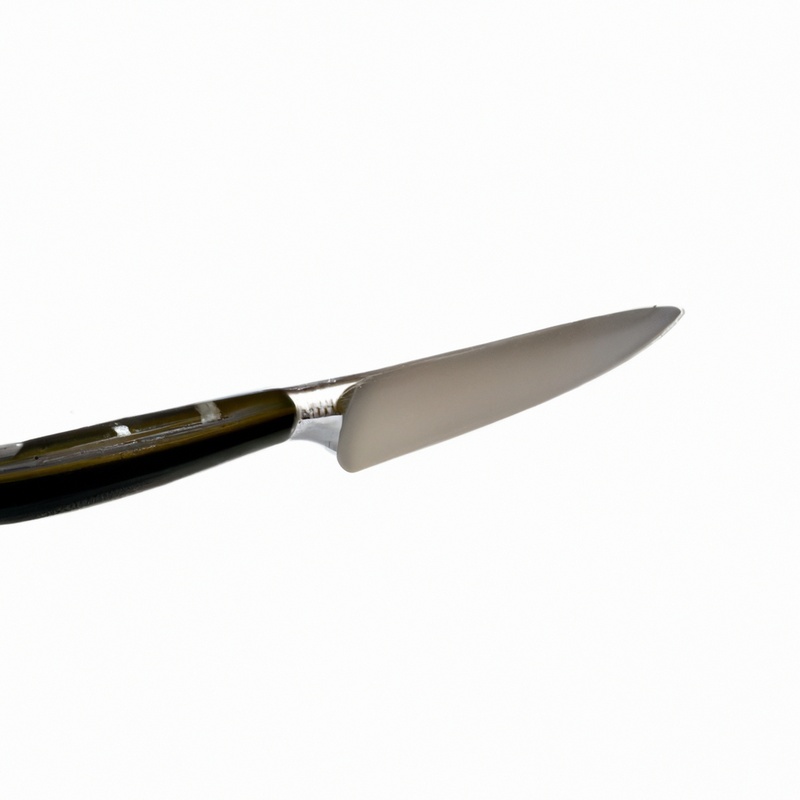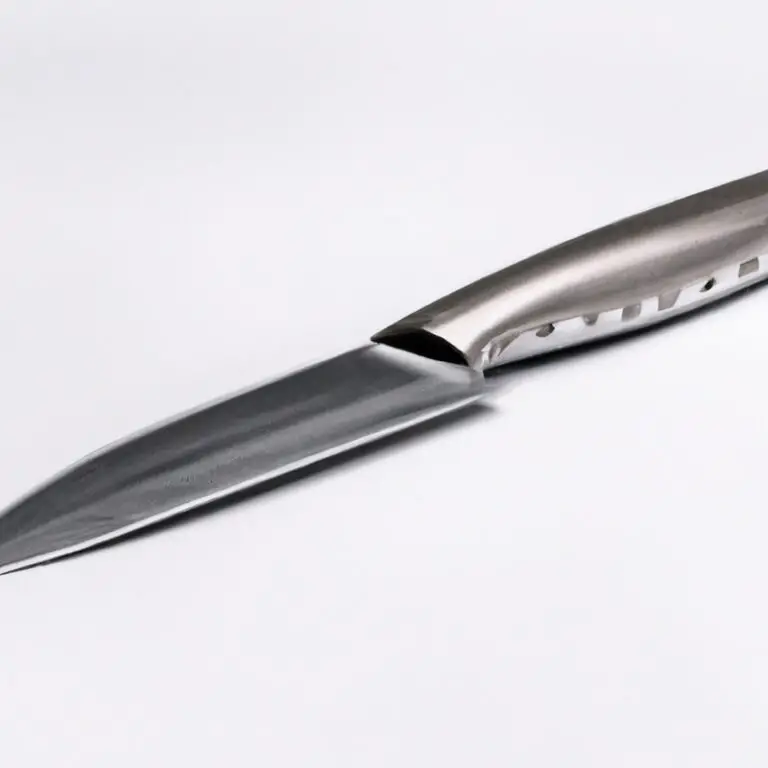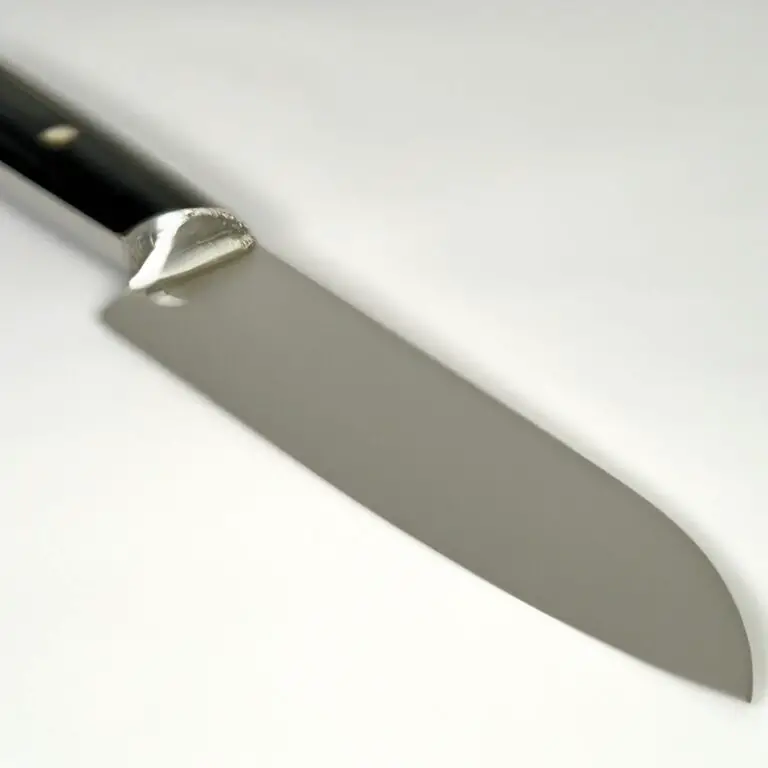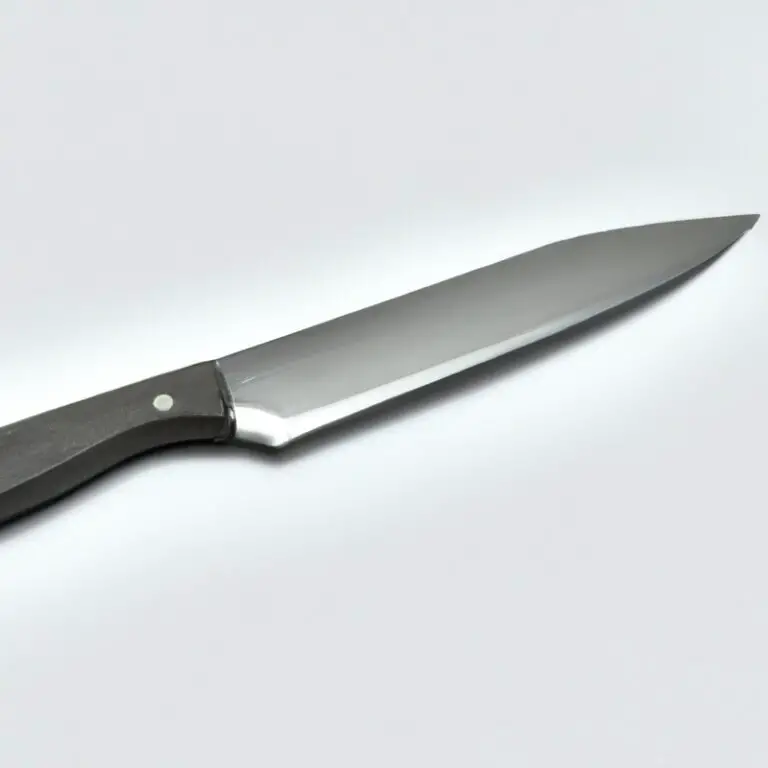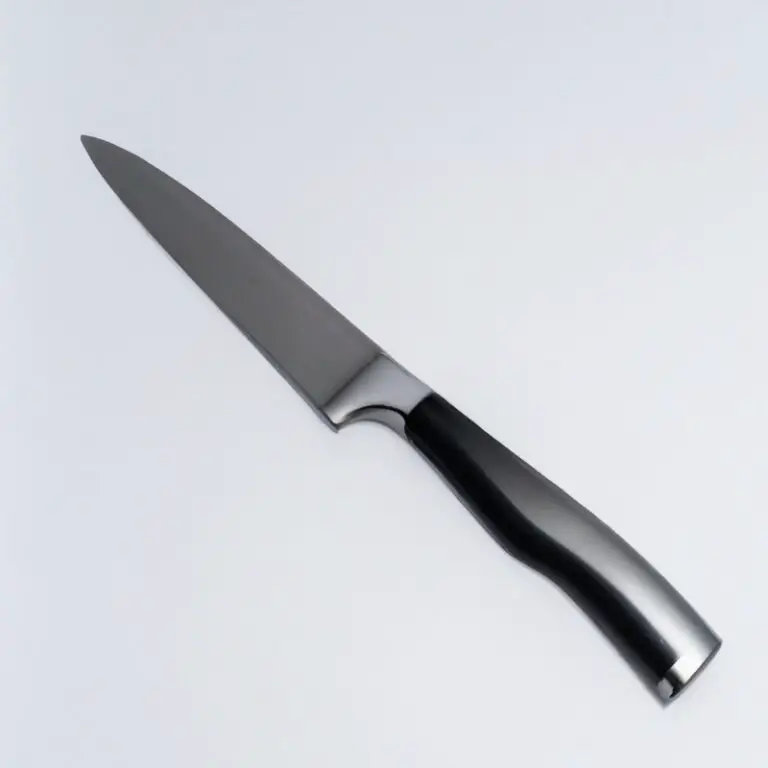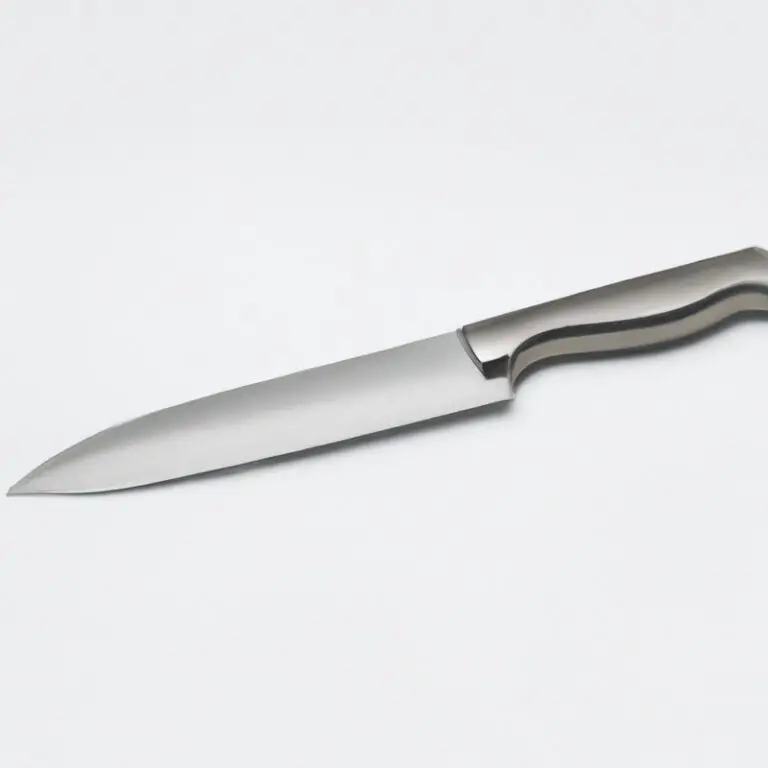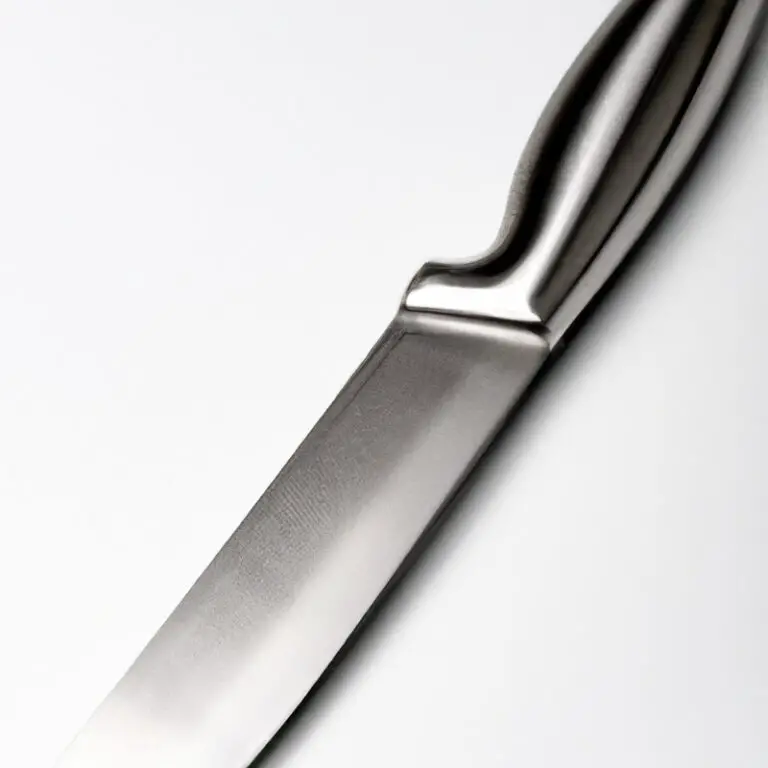How Do I Prevent My Paring Knife From Becoming Dull Too Quickly? – Sharpening Tips
Key Takeaways:
- Choose a high-quality paring knife made from durable materials to prevent dulling.
- Regularly hone your paring knife using a honing steel or ceramic rod to maintain its sharp edge.
- Store your paring knife properly in a protective sheath or knife block to avoid damage and dulling.
- Avoid using your paring knife on hard surfaces, frozen foods, or bones to prolong its sharpness.
Are you tired of your paring knife losing its sharpness after just a few uses? Dull knives can make cooking a frustrating experience, but it doesn’t have to be that way.
As a passionate home cook and kitchen enthusiast, I know just how essential a sharp paring knife is for meal prep.
In this article, I’ll share some expert tips on how to prevent your paring knife from becoming dull too quickly. From proper handling and maintenance techniques to selecting the right cutting surface, you’ll learn everything you need to know to keep your knife sharp and ready for action.
So, let’s get started!
| Paring Knife Care Tips | |
| Tip #1: Use a cutting board | When using a paring knife, make sure to always use a cutting board. Avoid cutting on hard surfaces like stone or metal, as this can quickly dull the blade. |
| Tip #2: Hand-wash and dry your knife | To prevent your paring knife from dulling too quickly, hand-wash and dry it after each use. Avoid putting it in the dishwasher, as the high heat and abrasive detergents can damage the blade. |
| Tip #3: Store your knife properly | Store your paring knife in a knife block or magnetic strip to protect the blade and prevent it from coming in contact with other kitchen tools that may damage it. |
| Tip #4: Sharpen your knife regularly | Regular sharpening of your paring knife will help keep the blade sharp and prevent it from dulling too quickly. A honing steel or handheld knife sharpener are both great options for at-home sharpening. |
Understanding Your Paring Knife
Understanding Your Paring Knife A paring knife is a small knife used for intricate tasks such as peeling and trimming small fruits and vegetables. It typically has a thin, sharp blade that tapers to a point.
Understanding the various parts of a paring knife is essential in maintaining its longevity.
The edge, spine, and point are the three essential parts of any knife. The edge is the part of the blade that does the cutting.
The spine is the thicker part of the blade opposite the edge, and the point is the sharp tip of the blade.
Understanding the anatomy of your paring knife can help you identify which part of the knife needs sharpening or maintenance. Having sharp edges and a pointed tip can help accelerate the ease and precision of your cutting tasks.
Proper Handling and Storage of Your Knife
Proper handling and storage of your paring knife is crucial in maintaining its sharpness and longevity. Here are some tips for handling and storing your knife:
- Always hold your knife with your full hand on the handle, gripping it firmly, and keeping your fingers away from the blade.
- Avoid using your knife on hard surfaces such as glass, metal, or ceramic, as it can cause dents or chips in the blade.
- After each use, hand wash and dry your knife immediately to prevent corrosion or rust. Avoid putting it in the dishwasher or soaking it in water.
- Store your knife in a knife block, sheath, or on a magnetic strip to protect the blade and prevent it from getting dull.
- Make sure to regularly sharpen and hone your knife to maintain its sharpness and longevity.
By following these simple guidelines for proper handling and storage, you can keep your paring knife in top condition for years to come.
Choosing the Right Cutting Surface
Choosing the right cutting surface is crucial to prevent your paring knife from becoming dull too quickly. Avoid using hard surfaces like glass, marble, or granite, as they can damage the knife’s edge.
Instead, use wood cutting boards or soft plastics that are knife-friendly and won’t chip or dent the blade.
Avoid cutting on metal surfaces like aluminum sheets or countertops, as they can also damage the blade. It’s recommended to have multiple cutting boards designated for different foods, such as one for meat and another for fruits and vegetables, to prevent cross-contamination.
By investing in a knife-friendly cutting surface, you can extend the lifespan of your paring knife and keep it sharp for longer.
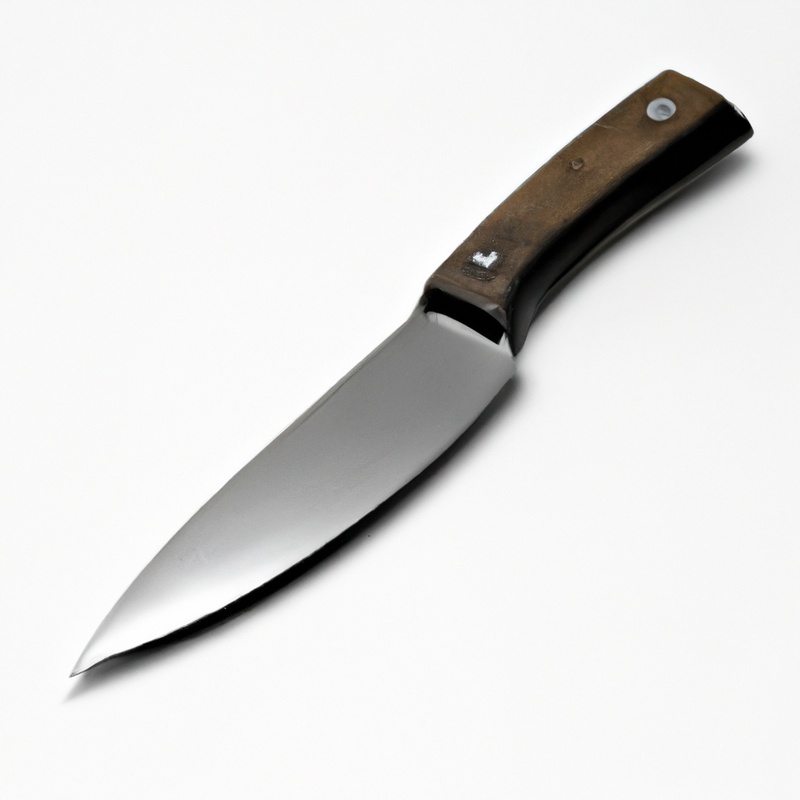
Sharpening Your Paring Knife
Sharpening Your Paring Knife Regular sharpening of your paring knife is essential to prevent it from becoming dull too quickly. Here are some tips on how to sharpen your knife effectively:
- Use a sharpening stone – sharpening stones are ideal for maintaining the sharpness of your knife. Begin by lubricating the stone and move the knife blade across it at a consistent angle. Repeat the same process on the other side.
- Find the right angle – determining the angle of your blade is crucial when sharpening your knife. Typically, the angle ranges between 15 to 20 degrees.
- Don’t over-sharpen – over-sharpening can damage your knife’s blade. Stop sharpening once you feel the knife is sharp enough to cut through produce effortlessly.
- Use a honing rod – after sharpening your knife using a honing rod helps to maintain the blade’s edge. Move the knife blade gently across the honing rod in the same direction used during sharpening.
By following these tips, you can sharpen your knife effectively, and extend its longevity.
Using a Honing Rod for Maintenance
Using a honing rod is an effective way to maintain the sharpness of your paring knife. Honing is the process of realigning the blade’s edge, rather than removing any metal from the blade itself.
It is a quick and easy solution for maintaining your knife’s sharpness between sharpenings.
To use a honing rod, hold the rod upright with the tip resting on a non-slip surface. Hold the knife at a 20-degree angle and gently slide the blade down the honing rod, starting at the handle and moving towards the tip.
Repeat on the other side of the blade, maintaining the same angle.
It’s important not to use too much pressure during honing, as this can damage the blade’s edge. A few light strokes on each side should be enough to realign the blade’s edge and keep it sharp.
Honing your paring knife regularly will extend its longevity and prevent it from becoming dull too quickly.
It’s recommended to hone your knife after every use to maintain its sharpness. Remember, using a honing rod is not a substitute for sharpening your knife, but it will help keep your knife sharp in between sharpenings.
Avoiding Common Mistakes That Dull Knives
Avoiding Common Mistakes That Dull Knives:
- Avoid using glass or ceramic cutting surfaces as they are too hard and can damage the knife’s edge.
- Never use your knife on any surface that is not meant for cutting, such as plates, countertops, or marble surfaces.
- Do not try to cut through bones or frozen items as this puts too much pressure on the blade and can damage the edge.
- Avoid twisting or torquing the knife while it is still embedded in the food.
- Do not run the knife through the dishwasher as the detergents and heat can damage the edge.
- Avoid using abrasive scrubbers to clean your knife as this can scratch the surface and dull the blade.
- Keep your knife dry to avoid rusting, which can damage the edge.
- Do not store your knife in a cluttered drawer where it can get knocked around and damaged.
- Lastly, always use the appropriate cutting technique and pressure to avoid unnecessary wear and tear on the blade.
Using Appropriate Pressure and Technique
Using appropriate pressure and technique is crucial when it comes to preventing your paring knife from becoming dull too quickly. When cutting, ensure that you are using a comfortable grip and positioning your hand correctly.
Use a rocking motion to cut and avoid pushing or dragging the knife.
Applying too much pressure can cause the knife to become dull quickly. Additionally, it is important to cut in the right direction.
Start from the heel of the blade and move towards the tip.
This will help to maintain the sharp edge of the knife. Remember to use a cutting board that is gentle on your knife edge, such as a wooden or plastic cutting board.
Avoid glass or stone cutting boards as they can quickly dull your knife.
Using the appropriate technique and pressure when cutting will help prolong the life of your paring knife, ensuring that it remains sharp and effective for years to come.
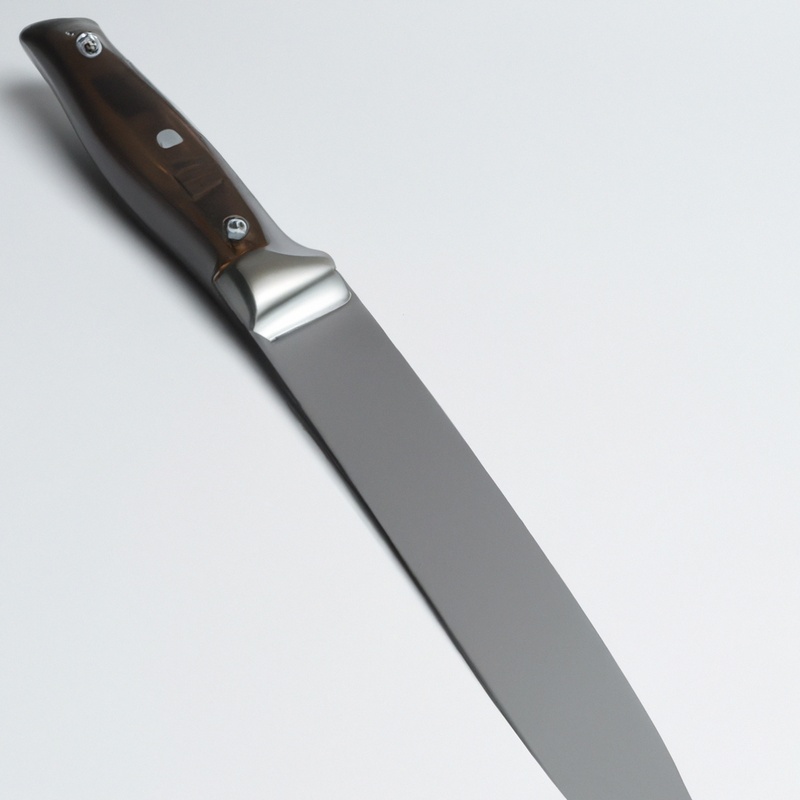
Lubricating Your Knife for Longevity
Lubricating your paring knife regularly is a critical step to ensure longevity. It helps to reduce metal-to-metal friction, which causes your knife to lose its sharpness quickly.
To lubricate your knife, you can use food-grade mineral oil, vegetable oil, or any other lubricant recommended by the manufacturer.
Apply a few drops of oil to the blade surface and then spread it evenly using a soft cloth. Be careful not to over lubricate as it can cause staining of food items during cutting.
Additionally, ensure you maintain the cleanliness of your knife by wiping it clean, especially after each use to prevent buildup of dirt and grime.
With regular maintenance, your paring knife can last for years or even decades.
Investing in a Quality Paring Knife
Investing in a quality paring knife is essential for maintaining its sharpness and preventing it from going dull quickly. Spending a bit more on a well-made knife can save you money in the long run by lasting longer and requiring less frequent replacements.
Look for a paring knife with a material that is hard enough to hold an edge, such as high-carbon stainless steel or ceramic.
The handle should be comfortable to grip and provide a secure hold, such as one made of silicone or textured plastic. Avoid knives with serrated edges or those advertised as “never needing sharpening,” as they tend to go dull quickly and are difficult to maintain.
Brands known for quality knives include Wüsthof, Shun, Global, and Victorinox.
Make sure to do your research and read reviews before making a purchase. Remember, a good knife is an investment in your cooking skills and the longevity of your kitchen tools.
Developing Good Knife Habits for Future Prevention
Developing good knife habits is vital to prevent your paring knife from becoming dull too quickly. Here are some effective tips to develop good habits:
- Always use a cutting board or surface that won’t damage the blade.
- Never use your knife on a frozen or hard surface.
- Avoid using your paring knife for tasks that require a serrated or heavy-duty blade.
- Always hand wash and dry your knife immediately after use.
- Store your knife in a safe place, like a knife block or magnetic strip, to avoid damage.
- Use a honing rod to maintain the sharpness of your blade regularly.
- Apply lubricant or oil to your knife to prevent corrosion and keep the blade in top condition.
- Invest in a high-quality knife that will last for a long time with proper maintenance.
By following these habits, you can keep your paring knife in excellent condition and extend its lifespan. It’s essential to develop good knife habits to avoid costly replacements and improve the quality of your cooking.
Final Verdict
Keeping your paring knife sharp and functional is essential in any kitchen. By understanding the proper handling and storage techniques, choosing the right cutting surface, and sharpening your knife regularly, you can extend the longevity of your paring knife.
Avoiding common mistakes such as using inappropriate pressure and technique, and lubricating your knife for longevity are all crucial in preventing your knife from becoming dull too fast.
Investing in a quality paring knife and developing good knife habits are also important for future prevention. By following these tips, you can ensure that your paring knife remains sharp and reliable, allowing you to conquer any culinary challenge with ease.
With knowledge and commitment, you can become a pro in knife maintenance, and your trusty paring knife will always be ready for action.

